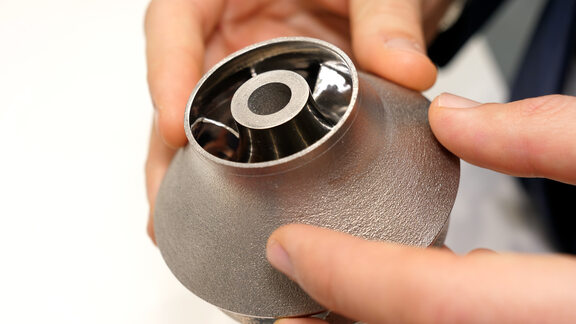The Technical University of Munich (TUM) and Oerlikon, the Swiss engineering and technology group, will work together to drive forward additive manufacturing technologies. To accomplish this, they have founded the TUM-Oerlikon Advanced Manufacturing Institute to master the technical challenges on the road to industrialization.
This institute, based on the TUM campus in Garching, Germany, is being funded with an annual budget of EUR 3 million for the first five years. The researchers at TUM and the scientific team from Oerlikon’s additive manufacturing business unit will be working closely together at the institute. Over the next five years, up to thirty dissertations focusing on technical research along the entire value chain will be supervised. These include the development of new, tailor-made materials, studies on the printing process and the reciprocal interactions between processes and materials, as well as the entire additive manufacturing procedure.
“Together with Oerlikon, we wish to transform Munich to become recognized globally as a center of additive manufacturing technologies,” says TUM President Professor Thomas F. Hofmann. “This collaboration perfectly complements our Industry on Campus strategy of bringing science and practical applications closer together and making substantive contributions to the industrialization of additive manufacturing technologies.”
“To further the collaborative synergies between the university and ourselves, we have decided to relocate our business activities together with our in-house research department from Feldkirchen to Garching,” emphasizes Dr. Sven Hicken, CTO, Oerlikon Surface Solutions Division. “Both partners benefit from such a partnership: doctoral students can use our hardware, including our 3D printers and our laboratories, and we are close to the research activities of a truly excellent university.”
Dr. Nikolaus A. Adams, Director of the Chair Aerodynamics and Fluid Mechanics at TUM, who is responsible for the institute, explains the key points for these projects: “Our research efforts focus primarily on technical challenges which, once we have surmounted them, will speed up the development of 3D metal printing. For example, we are already working together on the new ultra-strong light aluminum-based alloys that are in high demand in the industry, on demanding new simulation techniques to predict the melting and solidification process for metal powders and on the development of a digital certification process using components produced for the aerospace industry with the help of advanced manufacturing.”
Remember, you can post free of charge job opportunities in the AM Industry on 3D ADEPT Media or look for a job via our job board. Make sure to follow us on our social networks and subscribe to our weekly newsletter : Facebook, Twitter, LinkedIn & Instagram ! If you want to be featured in the next issue of our digital magazine or if you hear a story that needs to be heard, make sure to send it to contact@3dadept.com






